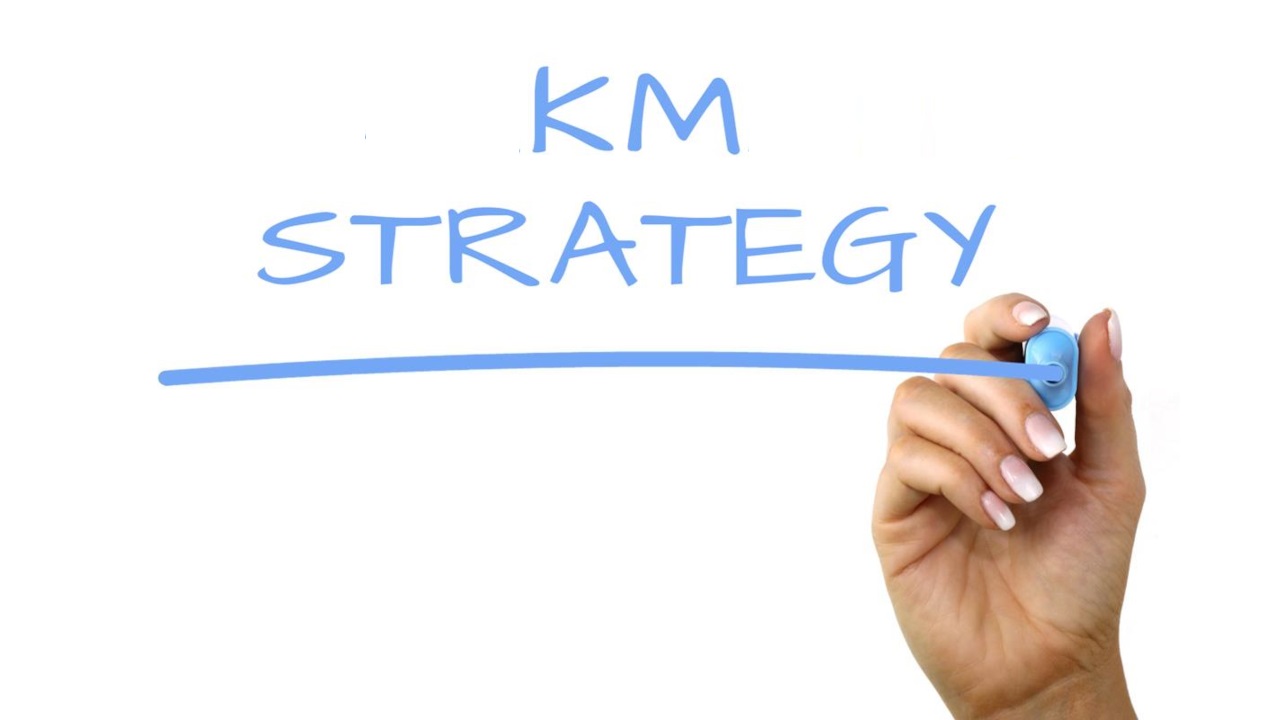
What we talk about when we talk about KM strategy
“Never heard of, nor do I care”
Recently, when I mention my new major, KM, or knowledge management, people are easily confused. Some ask me directly, while others hold back their curiosity and conclude that an unfamiliar abbreviation must guarantee the major’s futility. I bet none of the latter has heard of knowledge management (KM) strategy, a knowledge-related strategy that has a profound impact on organizational operation or individual daily life.
So what do we talk about when we talk about KM strategy? A definition from Zack1 put it in the following way:
KM strategy describes the overall approach an organization intends to take to align its knowledge resources and knowledge capabilities to the knowledge requirements of its organizational/business strategy.
In general, KM strategy can be defined as a structured and systematic plan that assists an organization in dealing with its knowledge-related affairs. It enables the organization to acquire, codify, hold, and apply the knowledge in practice, in a way that benefits the organization’s sustainable running.
Huawei, a China-based information and communication technology company operating around the world, the leading provider and promoter of 5G network technology, may serve as a good example2 of consistently adopting KM strategy. With KM approaches including Huawei University, Huawei Break the Book Community3, Annual Global Conference and an overall framework in line with its general strategy, increased innovation and better quality control of products within the corporate achievement, the giant now is marching on towards a even brighter future at a controllable operational cost. It’s at least reasonable to argue, that KM strategy does help in running big companies like Huawei.
“Maybe there’s something in it…”
Someone may say, “OK, now I’m starting to get it. KM and KM strategy are gadgets that corporate behemoths or tech giants play with.” Not exactly. Regardless of the size or the phase of the business, as long as it is in charge of knowledge (in the form varies from tacit experiences to explicit protocols, SOPs, and standards), KM strategy can play a role.
However, people still question the necessity of KM strategy in small companies. Since I used to work for an intellectual property management consulting company, where we provided intellectual property solutions and advice beyond IP scope, some of my clients’ stories may shed light on this question. One of my clients was a traditional smeltery company in Sichuan, China, suffering from the loss of technical secrets. Based on researching the status quo of the company, we formulated an intellectual property strategy and feasible plans by the corporate vision. We also dug into the root cause and concluded that all its problems could somehow be traced back to the loss of unrecorded core techniques, which were in the hands of several oldest member and gone when they resigned from their positions. The company was left with nothing more than ambiguous logs or pictures. The accident impacted its production capacity, R&D progress, and overall revenue. Now if we rephrase the company’s problem in the context of KM, it’s safe to say that the company had serious deficiencies at least in knowledge acquisition, codification, refinement, and application; our suggestion was focusing on setting up a primary KM strategy in line with the corporate vision and business goal.
Another story comes from a leading medical equipment manufacturer, whose business strategy goes through several adjustments along the time, a vivid example that KM strategy is not once and for all. During the first stage of our cooperation, the medical equipment company stressed heavily on the identification, acquisition, and storage of knowledge, to serve their goal of expanding their knowledge base and enhancing industry influence; in the second stage of our cooperation, the corporate’s priority moved from accumulation of knowledge to application and transfer of knowledge, during which period they start to authorize technology to other companies; and in the third stage, the corporate had this tendency to value all steps of KM processes equally.
Management of present and future
What are we talking about when we talk about KM strategy? It can be deemed as a set of knowledge-related solutions or guidance, in line with the organization’s short-term goal and long-term vision. KM strategy is not the catholicon, however it does help solve the problems from multinational giants to local business on smaller scale, making competitive edges more possible and sustainable growth more accessible.
Our lecturer Rajesh Dhillon alerts to the specific benefits that KM strategy can bring to organizations. For instance, a well-executed KM strategy can enhance knowledge sharing among employees, leading to faster problem-solving, increased innovation, reduced duplication of efforts, and ultimately, improved productivity and profitability. Additionally, it can contribute to better decision-making by providing easy access to relevant information and insights. In addition, implementing KM strategies can encounter challenges such as resistance to change, the difficulty of capturing tacit knowledge, or maintaining knowledge quality. Addressing these challenges and providing strategies for overcoming them offers a pragmatic view of the KM landscape. There is a need to keep knowledge sustainable, expanding on the concept of knowledge sustainability, and discussing how organizations can ensure that valuable knowledge is retained, updated, and passed on to future generations of employees. This might involve documenting best practices, creating mentorship programs, and developing knowledge.
Article source: Adapted from What We Talk About When We Talk About KMS, prepared as part of the requirements for completion of course KM6304 Knowledge Management Strategies and Policies in the Nanyang Technological University Singapore Master of Science in Knowledge Management (KM).
Header image source: Adapted from Marketing Strategy by Nick Youngson, Alpha Stock Images, CC BY-SA 3.0.
References:
- Zack, M. H. (1999). Developing a knowledge strategy. California Management Review, 41(3), 125-145. ↩
- Dixon, N. (2016, May 3). How Huawei Finally Realized It Was Time for the Human Side of Knowledge Management. Common Knowledge Associates, Client Successes. ↩
- Gurteen, D. (2016, June). The Huawei Break the Book Community: A powerful example of peer learning. Conversational Leadership. ↩





